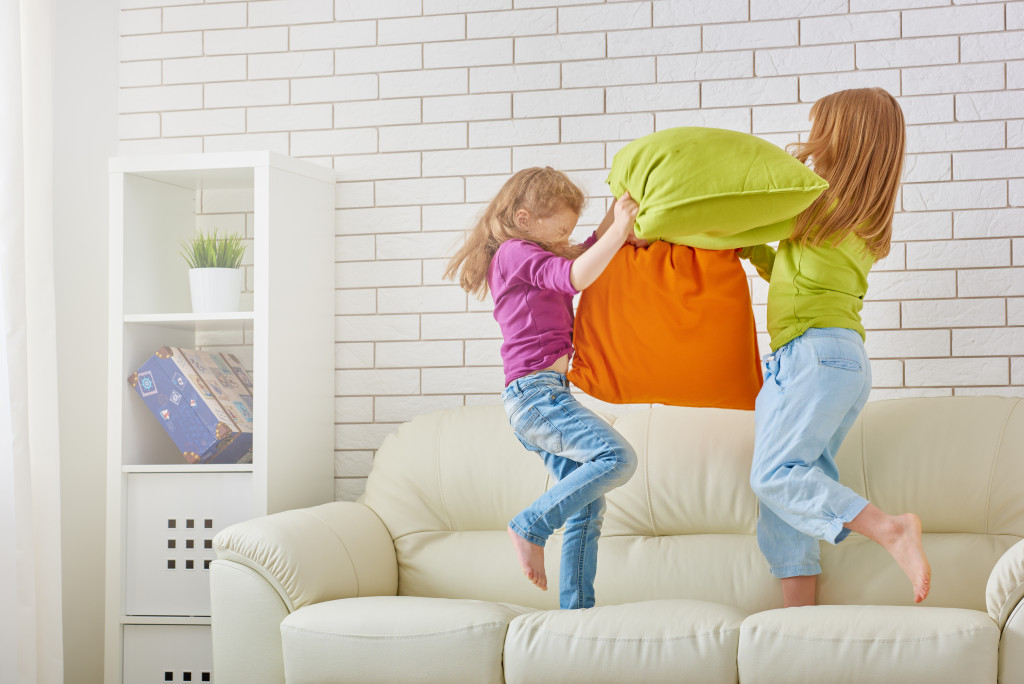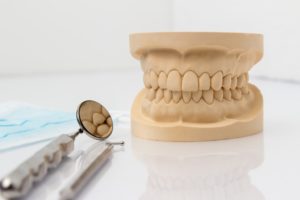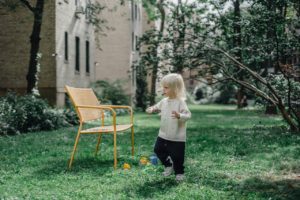- Secure your home with strong locks and consider investing in an alarm system.
- Ensure your child’s sleeping environment is safe by placing them on their back while sleeping and using a firm mattress that fits snugly into the crib or bed.
- Supervise children near water, stairs, and outdoors.
- Talk to your children about the importance of safety, potential hazards in the home, and who they can trust.
The safety of our children is paramount, especially when it comes to their home environment. Children should feel safe and secure at home, and parents should do everything possible to create a safe space for their little ones. With that in mind, here are some tips on creating a safe space at home for your children.
Secure Your Home
The first step in creating a safe space for your children is to ensure the security of your home. Install strong locks on doors and windows and consider investing in an alarm system. Children should be taught how to lock doors and windows and to keep the alarm code a secret.
If your windows are starting to show signs of wear, it’s essential to get them replaced as soon as possible by a window services company. New windows can help increase the security of your home and keep your family safe from potential intruders.
Safe Sleeping Environment
Ensure your child’s sleeping environment is safe by following essential tips. Firstly, place your child on their back while sleeping, reducing the risk of Sudden Infant Death Syndrome (SIDS). Always use a firm mattress that fits snuggly into their crib or bed, and avoid using pillows or any other soft material. Avoid placing stuffed toys or anything that could impede airflow into their cot.
You can also use physical barriers, such as a guardrail or mesh inner lining for cots, to ensure your child does not fall out of bed.
Supervision

Supervision is crucial when it comes to your child’s safety at home. Children should never be left unsupervised near water, particularly pools or bathtubs. Always have eyes on your children while climbing stairs or playing outside, and never leave them alone in a hot car.
In addition, install safety measures such as childproof locks and gates to restrict your child’s access to certain home areas.
Communication
Talking to your children is vital to making sure they feel safe at home. Explain that they should never touch or play with dangerous objects, such as sharp tools or household cleaners. Discuss the importance of safety, why it’s necessary, and how it helps them feel safe and secure.
Make sure to explain any hazards that may be present in your home, such as a hot oven or electrical outlets. Be sure to talk to them about who they can trust and who they should never open their doors for.
Childproofing
Childproofing your house is essential in ensuring your child’s safety. As they become more mobile, their newfound curiosity can often lead to them getting into things they shouldn’t. That’s why it’s essential to childproof your home and create a safe environment for your children to play and grow in.
Identify Potential Hazards
The first step in childproofing your home is to identify any potential hazards. Think about everything in your home that could threaten your child, from sharp corners on furniture to cleaning products and anything else that could be harmful. Once you’ve identified these hazards, you can take steps to eliminate them or make them safer.
Secure Furniture
Furniture can be a significant danger for children, mainly if it’s unsteady or has sharp corners. Ensure all heavy and bulky furniture is bolted to the wall so it can’t be pulled over. Investing in rounded-corner furniture is also a great idea for younger children. Keep items like lamps, vases, and another fragile decor out of reach and place them in a less accessible area.
Electrical and Electronics

Electrical sockets, hanging cables, and wires can be dangerous for curious children. Electrical sockets should be covered with childproof outlet covers while hanging cables should be tucked away from little hands or secured with soft padding so it doesn’t attract much attention.
Lock up cabinets and drawers.
Cabinets and drawers can be fascinating to children who love to explore. However, they can also be a potential danger, mainly if they contain cleaning products or other hazardous materials. Installing cabinet locks and drawer stops is an effective way to keep children out of harm’s way.
Final Thoughts
Creating a safe space for your children is essential for their well-being and development. By following some straightforward steps, such as securing your home, childproofing, creating a safe sleeping environment, offering supervision, and opening up communication with your little ones, you can ensure their safety and create a secure, loving space that they call home. Remember, safety is the foundation of a happy home.



















